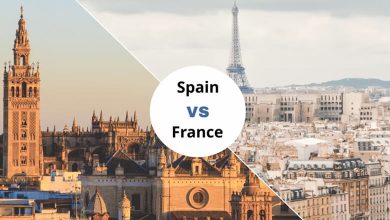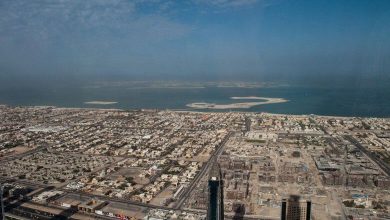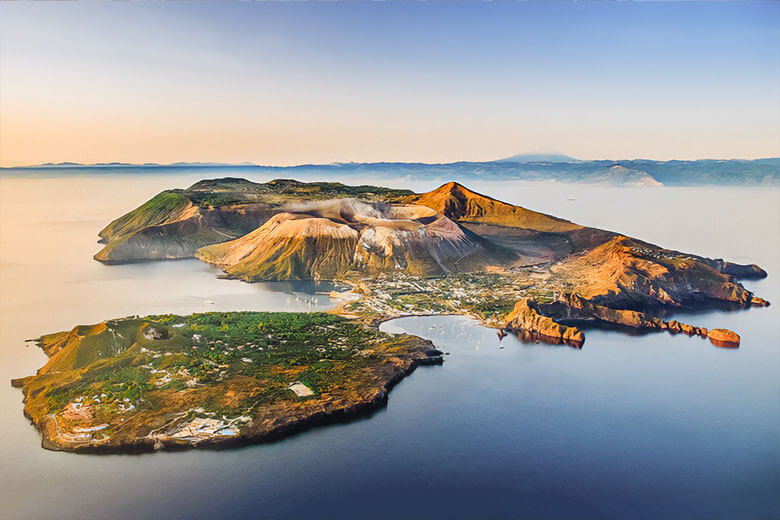
The Aeolian Islands, sometimes called the Lipari Group after their largest island, is a volcanic archipelago in the Tyrrhenian Sea north of Sicily, said to be named after Aeolus, the mythical lord of the winds. increase.
The inhabitants of the island are known as Aeolians. In the 2011 census, the island’s permanent population was 14,224. The latest official estimate as of January 1, 2019, is 15,419. The Aeolian Islands are a popular summer tourist destination, with up to 600,000 visitors a year.
There are seven main islands: Lipari, Filicudi, Salina, Stromboli, Alicudi, Panarea, Vulcano, and many smaller islands and rocks.
Geography of Aeolian Islands
The Aeolian Islands are located 30 km and 80 km respectively from the northern coast of Sicily in the Tyrrhenian Sea. Vulcano is the closest place to the Sicilian coast. Lipari and Salina to the north, Filicudi and Alicudi to the west, and Panarea and Stromboli to the northeast.
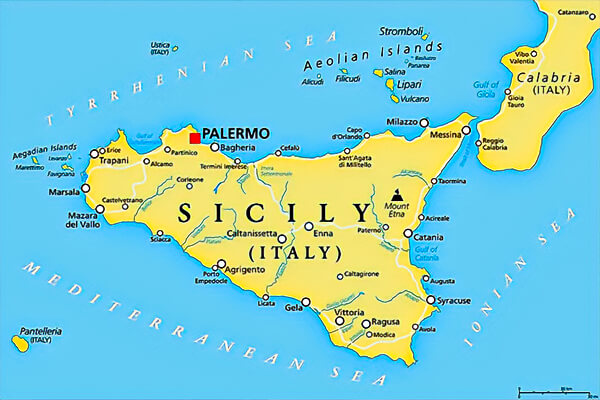
There are many smaller uninhabited islands and rocky cliffs, such as Basiluzzo, Strombolicchio, Dattiro, and Lisca Bianca IN Aeolian Islands.
The largest island is Lipari, followed by Salina, Vulcano, Stromboli, Filicudi, and Alicudi. The smallest island is Panarea at 3.4 km². The highest point in the Aeolian Islands is Monte Fossa delle Felci on Salina, reaching a height of 962 m.
Geology of Aeolian Islands
Covering an area of 1,600 km2, the complex of seven Aeolian islands arose in the Tyrrhenian Basin, a vast plain at the bottom of the Tyrrhenian Sea. Lava eruptions from depths of up to 12,000 feet formed the Aeolian Islands, Ustica, a series of submarine volcanoes called Magnani, Vavilov, Marsili, Palinuro, and two unnamed volcanoes.
The Aeolian Islands’ current shape is the result of 260,000 years of volcanic activity. He has two active volcanoes, Stromboli and Vulcano. Most islands have steam vents and hot spring water. Volcanic activity leaves the islands with very fertile soils that favor the growth of natural plants.

Geologically, the archipelago is defined as a volcanic arc. The origin of the Aeolian Islands is due to crustal movements caused by plate tectonics. The continental shelf of Africa is in constant motion towards Europe. Subduction under the Eurasian plate produces magma, which rises to the surface where it forms volcanoes.
The “Aeolian Arc” stretches over 140 km, but the region of geological instability caused by the collision of Africa and Europe is much wider. Includes Sicily, Calabria, Campania, Greece, and the Aegean islands.
Administration of Aeolian Islands
These islands belong to the province of Messina in Sicily. All islands except Salina form Lipari city within this state. Salina forms three different communities. Marfa, Reni and Santa Marina Salina.
Architectural control of the Aeolian Islands
Controlling urban development has become an important factor in preserving the natural state of the Aeolian Islands. New builds are severely restricted. You can buy an existing house and restore it, but it must be built to resemble a whitewashed house.
Traditional houses are modular cubes made from natural building materials such as stone, lava, pumice, and tuff. Almost all houses have huge outdoor terraces, most of which are shaded by vines or flowering vines.
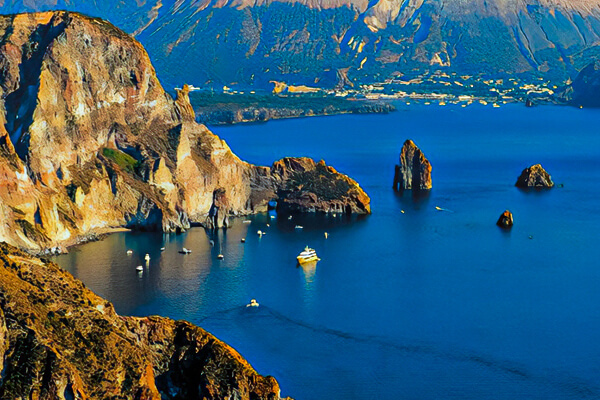
The mythology of the Aeolian Islands
In Homer’s epic poem The Odyssey, Hippotes’ son Aeolus was the protector of the wind god and king of the mythical floating island of Aeolia. He kept the furious winds safe within the island, releasing them only by command of the great gods to wreak havoc on the world.
The hero of the epic, Odysseus, on his way home from Troy, visited the island of Aeolus and was entrusted with all the windbags to get him home safely. However, during the journey, the hero’s companions opened the sack, and the ship returned to the shores of Aeolus on the fleeing wind.
History of the Aeolian Islands
4000–2500 BC
The first evidence of Sicilian immigration was in Lipari By the time the metal was introduced, the manufacture and trade of obsidian was well developed.
1600–1250 BC
During the Bronze Age, the Aeolians thrived on maritime trade in the region extending from Mycenae to the British Isles, from which tin was imported. Aeolian villages flourished at Cape Graziano, Castello, Cerro dei Ciampi, Cape Milazzese, and Portela. All these settlements were founded in 1250 BC. Destroyed by the new Italian invasion
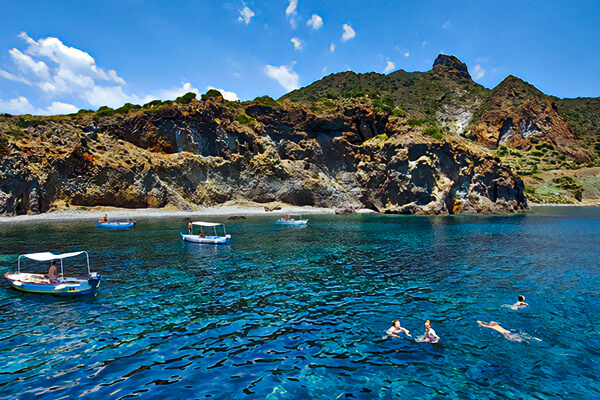
1240–850 BC
According to Diodorus Siculus, the Aeolian Islands were occupied by the Orsons led by Repulse. Riparus was succeeded by Aeolus, whose house, according to Homer’s Odyssey, entertained Odysseus.
600–300 BC
580 BC Greeks were expelled from Rhodes and Knidos landed on Lipari, beginning an era of Greek rule known for its piracy against Etruscan and Phoenician ships. Vases and other pottery were made.
300 BC-AD 250
The islanders were allies of the Carthaginians against Rome during the Punic Wars. The Battle of the Aeolian Islands in 260 BC led to the victory of the Carthaginian army, but later the Roman army sacked Lipari and its rule led to a period of poverty.

AD 250–1000
With the fall of the Roman Empire, the Aeolian Islands came under the control of the Visigoths, Vandals, Ostrogoths, and then the Byzantine Empire. According to Christian legend, a coffin containing Bartholomew’s body washed up on the shores of Lipari in AD 264, and Bartholomew was soon named the patron saint of the Aeolian Islands.
In 836, the Aghlabid dynasty of the Ifriqiya king Ziyadad Allah I sacked Lipari, slaughtered most of the population, enslaved the survivors, and annexed the Aeolian Islands to the Emirate of Sicily.
1000–1600
When the Normans conquered Sicily by the Emirate of Sicily in 1061, the islands were annexed. Roger II, King of Sicily, sent Benedictine monks to Lipari, which led to a significant development of the island. A cathedral dedicated to St. Bartholomew was built, and a Benedictine monastery was built within the castle. In 1208, King Frederick II of Swabia ascended the throne of the Kingdom of Sicily.
The period of prosperity that followed ended with the rule of the Angevins and the Sicilian rebellion, culminating in the Vesper rebellion in Sicily. However, the Aeolians remained loyal to Charles of Anjou, and trade relations were established with Naples, the capital of the Kingdom of Anjou.
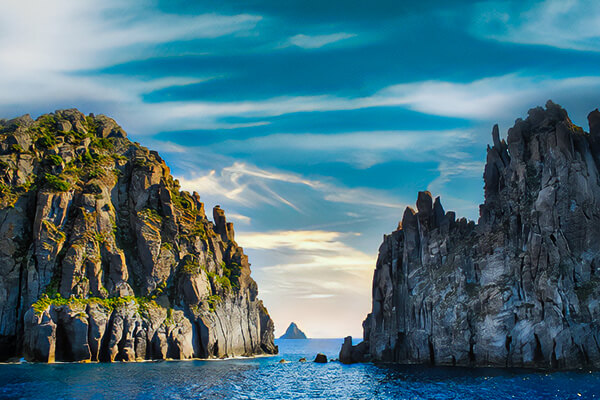
1600–present
The 1693 earthquake destroyed all towns in eastern Sicily and killed about 60,000 people. After the inhabitants prayed in the cathedral and called for Saint Bartholomew’s protection, there were no casualties in the Aeolian Islands.
The island’s economic situation improved greatly in the 17th century with the advancement of agriculture, the cultivation of capers, various fruits and vegetables, and fishing. Criminals and political prisoners also came to the island with the bourbons.
The penal colony was closed in 1916, but an unsuccessful attempt by the Fascist regime to reopen it in 1926. The islanders responded by demolishing the remains of the former prison within the castle.
Shortly thereafter, however, the castle was rebuilt to house anti-fascist political prisoners in forced exile. Librarians made friends with these exiles until they were liberated by the Allies. After the war, the same room that housed opponents of fascism became the Aeolian Archaeological Museum.

UNESCO World Heritage Sites of the Aeolian Islands
The Aeolian Islands were declared a World Heritage Site by UNESCO in 2000 for providing “an excellent record of the formation and destruction of volcanic islands and ongoing volcanic phenomena”. Its World Heritage status was in jeopardy when Italy closed its pumice quarries and failed to stop the construction of four new ports. However, as of 2020, it is still listed as a UNESCO World Heritage Site.


